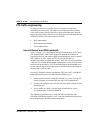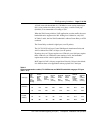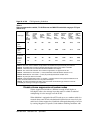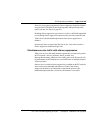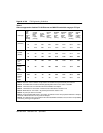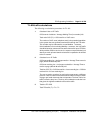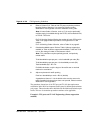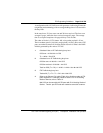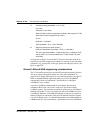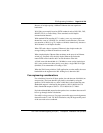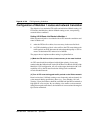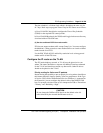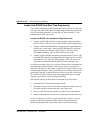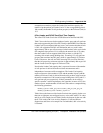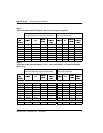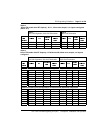
Page 84 of
378
ITG Engineering Guidelines
553-3001-202 Standard 1.00 April 2000
5 Calculate average bandwidth use on T-LAN
For voice:
720/36*30.7 =614 kbit/s
Refer to Table 5 (silence suppression enabled), data output for G.729
Annex AB and 30 ms payload is 30.7 kbit/s.
For fax:
84/36*46.1 =108 kbit/s
Total bandwidth = 614 + 108 = 722 kbit/s
6 Adjust requirement for traffic peaking
Peak hour bandwidth requirement = 722*1.3 = 939 kbit/s
This is the spare bandwidth a T-LAN should have to handle the VoIP
and fax traffic. It is recommended that the T-LAN handle ITG traffic
exclusively.
Note that this example is based on the G.729 Annex AB codec with 30 ms
payload size and silence suppression enabled. For relations of user selectable
parameters (e.g., payload size, codec type, packet size and QoS), refer to “Set
QoS” on page 108.
General LAN and WAN engineering considerations
The T-LAN traffic capacity does not limit ITG network engineering. Refer to
“Set up a system with separate subnets for voice and management” on
page 130 and “Single subnet option for voice and management” on page 131
Refer to standard Ethernet engineering tables for passive 10/100BaseT
repeater hubs. Refer to manufacturer’s specifications for intelligent
10/100BaseT layer switches.
A passive 10/100BaseT Ethernet hub is a half-duplex data transport
mechanism. Both “talk” and “listen” traffic use a part of the nominal
10 Mbit/s capacity. The customer must then set up the passive 10/100BaseT
Ethernet hub so that T-LAN voice traffic does not exceed 3MB/second on a
10/100BaseT Ethernet. A 10/100BaseT Ethernet switch port can operate in
either half-duplex or full-duplex mode, but ITG Ethernet interfaces operate
only in half-duplex mode. A switched Ethernet hub can reach throughput of
10MB/second. See your manufacturer’s specifications for more information.



